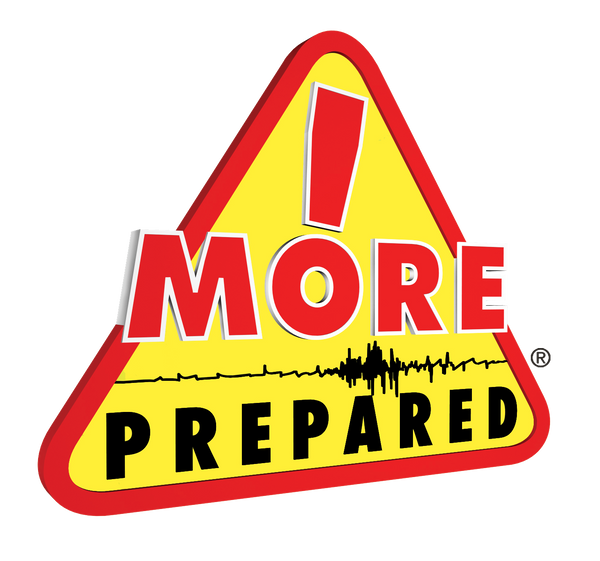Top Mistakes Schools Make With Emergency Preparedness — and How to Avoid Them
More Prepared LLCShare
Top Mistakes Schools Make With Emergency Preparedness — and How to Avoid Them
When disaster strikes, schools need to be ready to protect students and staff. Earthquakes, wildfires, power outages, and lockdowns can all disrupt a normal school day. While many districts have safety plans in place, too often schools make avoidable mistakes that leave them vulnerable. Here are the top missteps we see in 2025 and how to fix them.
1. Letting Supplies Expire
The mistake: Food, water, light sticks, and batteries are stored in kits but not replaced before expiration.
The fix: Use supplies with a minimum 5 year shelf life and set a reminder to check kits annually. Pre-assembled kits reduce the risk of oversight with an expiration or "Best By" date sticker.
2. One-Size-Fits-All Kits
The mistake: Schools buy identical kits for every classroom, without considering class size or student needs.
The fix: Right-size kits based on the number of students and staff so no one is left out, and provide allergy-safe food options to ensure everyone's needs are addressed.
3. Incomplete First Aid
The mistake: First aid kits often lack enough bandages, gloves, or special items like instant cold packs.
The fix: Stock a comprehensive first aid kit designed for schools and keep extra supplies for field trips and sports teams. Make sure these supplies are updated, as well.
4. No Student Comfort Kits
The mistake: Younger students can become anxious or frightened if separated from parents for long periods.
The fix: Ask families to prepare individual comfort kits with a photo, note, and safe snack. These provide reassurance and help the student during a stressful time.
5. Ignoring Sanitation Needs
The mistake: Few schools plan for restroom use during a long lockdown or shelter-in-place when facilities may not be accessible.
The fix: Include toilet bags, tissue, and hand wipes in every lockdown kit bucket. Even short-term emergencies can create hygiene issues.
6. Missing or Outdated Rosters
The mistake: Emergency kits often lack updated class lists, medical alerts, and parent contacts.
The fix: Store printed rosters in each kit and update them every semester.
7. Poor Communication Tools
The mistake: Relying only on cell phones during an outage.
The fix: Equip schools with a hand-crank or battery powered AM/FM radio, whistles, and HELP/OK window signs for reliable communication.
8. Lack of Staff Training
The mistake: Teachers and staff aren’t shown where the kits are stored or how to use them.
The fix: Add kit orientation to annual safety drills so staff are confident in an emergency.
9. Forgetting Special Needs
The mistake: Kits don’t account for students with medical, dietary, or accessibility needs.
The fix: Tailor supplies and include medications, EpiPens, or sensory comfort items as required.
10. Storing Kits Out of Reach
The mistake: Supplies locked away in an office or storage shed.
The fix: Keep a bucket kit or backpack in every classroom for quick access.
Final Word
School emergencies may be unpredictable, but preparedness doesn’t have to be. By avoiding these common mistakes, districts can ensure students are safe, staff are confident, and compliance is met.
At More Prepared, we make it easy with pre-assembled classroom, campus/whole school, and student kits built to district and state standards. All of our long-shelf-life kits come with a "Best By" date sticker so you spend less time checking expiration dates and more time focused on students.
Browse our School Emergency Kits here to make sure your classrooms are ready for back to school.

